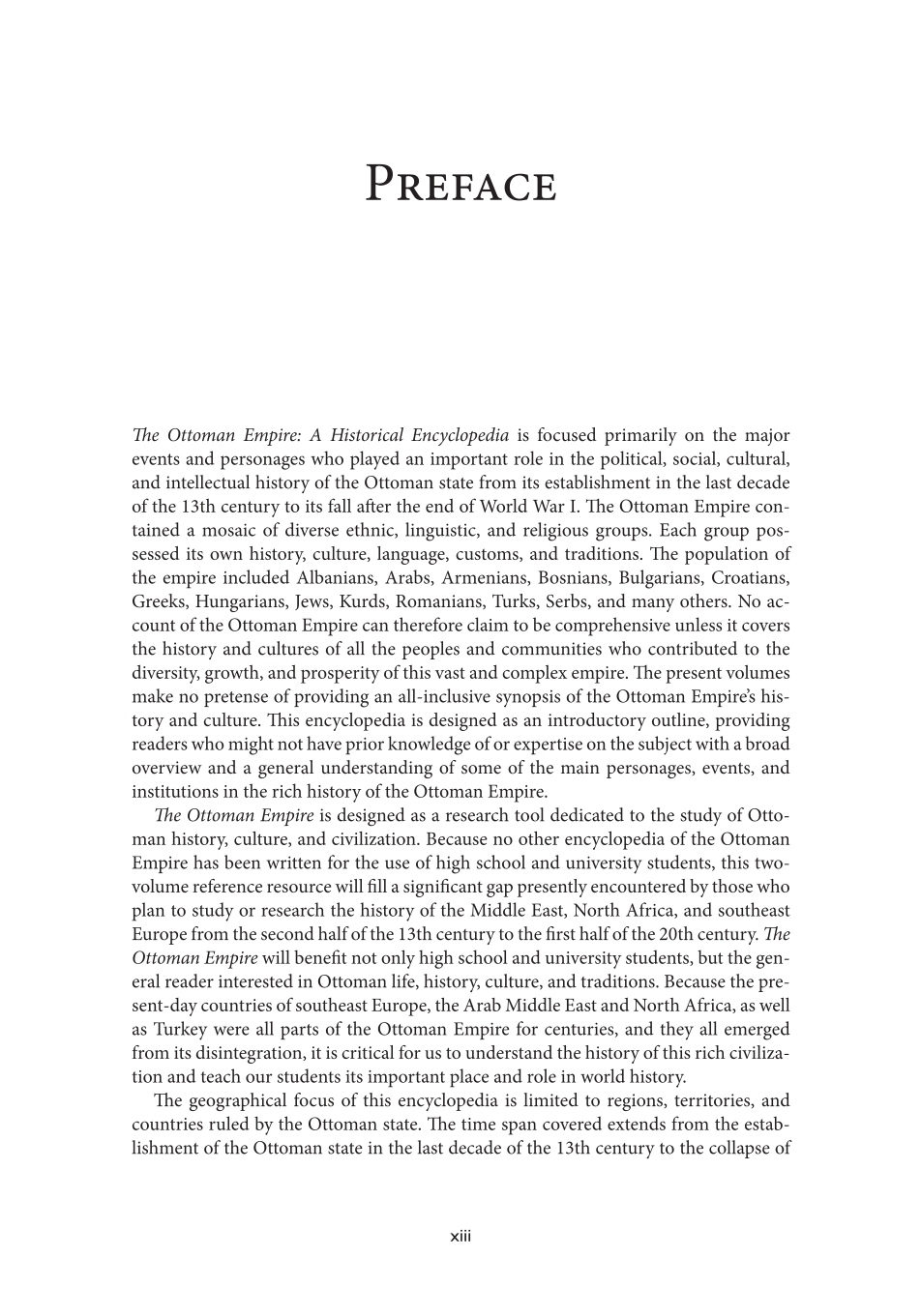xiii
The Ottoman Empire: A Historical Encyclopedia is focused primarily on the major
events and personages who played an important role in the political, social, cultural,
and intellectual history of the Ottoman state from its establishment in the last decade
of the 13th century to its fall after the end of World War I. The Ottoman Empire con-
tained a mosaic of diverse ethnic, linguistic, and religious groups. Each group pos-
sessed its own history, culture, language, customs, and traditions. The population of
the empire included Albanians, Arabs, Armenians, Bosnians, Bulgarians, Croatians,
Greeks, Hungarians, Jews, Kurds, Romanians, Turks, Serbs, and many others. No ac-
count of the Ottoman Empire can therefore claim to be comprehensive unless it covers
the history and cultures of all the peoples and communities who contributed to the
diversity, growth, and prosperity of this vast and complex empire. The present volumes
make no pretense of providing an all-inclusive synopsis of the Ottoman Empire’s his-
tory and culture. This encyclopedia is designed as an introductory outline, providing
readers who might not have prior knowledge of or expertise on the subject with a broad
overview and a general understanding of some of the main personages, events, and
institutions in the rich history of the Ottoman Empire.
The Ottoman Empire is designed as a research tool dedicated to the study of Otto-
man history, culture, and civilization. Because no other encyclopedia of the Ottoman
Empire has been written for the use of high school and university students, this two-
volume reference resource will fill a significant gap presently encountered by those who
plan to study or research the history of the Middle East, North Africa, and southeast
Europe from the second half of the 13th century to the first half of the 20th century. The
Ottoman Empire will benefit not only high school and university students, but the gen-
eral reader interested in Ottoman life, history, culture, and traditions. Because the pre-
sent-day countries of southeast Europe, the Arab Middle East and North Africa, as well
as Turkey were all parts of the Ottoman Empire for centuries, and they all emerged
from its disintegration, it is critical for us to understand the history of this rich civiliza-
tion and teach our students its important place and role in world history.
The geographical focus of this encyclopedia is limited to regions, territories, and
countries ruled by the Ottoman state. The time span covered extends from the estab-
lishment of the Ottoman state in the last decade of the 13th century to the collapse of
Preface




























































































































































































































































































































































































































































































































































































































































